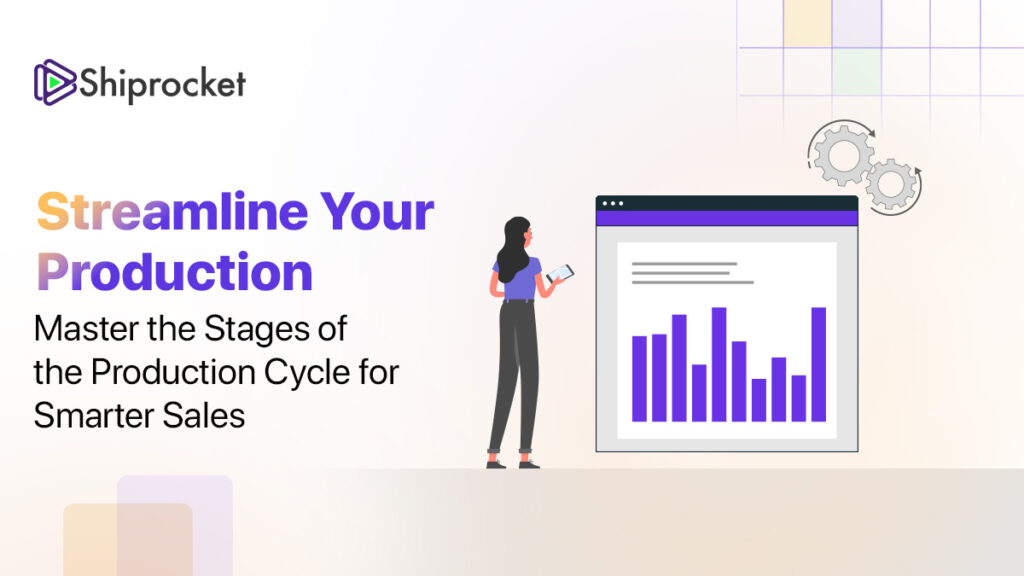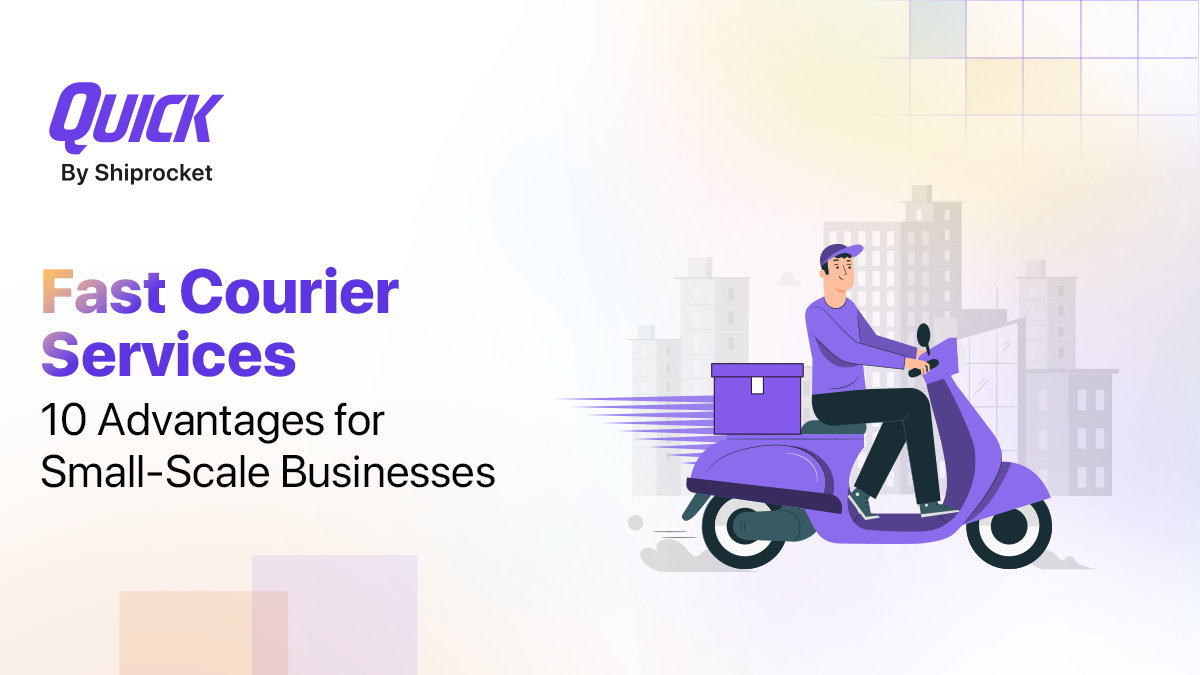- Understanding the Production Cycle
- Production Cycle Vs Product Life Cycle
- The Ten Essential Stages of the Production Cycle
- Production Cycle Example
- Four Key Advantages of Analysing the Production Cycle
- The Role of Cost Accounting in the Production Cycle
- The Benefits and Limitations of a Production Cycle
- Key Factors Influencing the Cycle
- Defining Production Cycle Time
- How to Calculate Production Cycle Time?
- Cycle Time, Lead Time, and Takt Time: Key Differences
- Difficulties with Production Cycle Analysis
- Leveraging MRP and ERP for Enhanced Management
- Conclusion
The production cycle is an important aspect of the manufacturing industry. It is a multi-step process that starts with planning and designing and ends with delivering the finished product.
Efficiently managing each step of the production cycle is important as it directly impacts product quality and overall expenditure. By understanding and streamlining each stage, businesses can minimise waste, optimise resources, and overcome challenges. This article provides detailed insights into the production cycle, covering its various stages, roles, advantages, how it differs from the product life cycle, and more.

Understanding the Production Cycle
The production cycle in manufacturing refers to the end-to-end product creation process. The initial steps of this cycle involve forecasting the demand for products and procuring necessary raw materials. The raw materials are then put through various processes and transformed into finished goods. After this, the final product undergoes stringent quality checks. This is an important step as it helps ensure that the quality standards are met. Thereafter, they are packed, stored, and delivered as per demand.
Production Cycle Vs Product Life Cycle
The production cycle and product life cycle are both essential in manufacturing. Although they are often confused with each other, they are distinct processes. As explained above, the production cycle entails the various steps involved in manufacturing a product, from raw material procurement to final product distribution. Its goal is to deliver products timely and efficiently to meet consumer demand.
On the other hand, the product life cycle refers to a product’s lifespan in the market, from its launch to the decline in its demand. It involves four stages, including introduction, growth, maturity, and decline.
The Ten Essential Stages of the Production Cycle
- Planning: Planning is the initial step. It involves understanding the raw material and manpower requirements, preparing a production schedule, and setting production goals, among other things. This step is necessary to manage the product cycle in a systematic manner and achieve the desired goals.
- Designing: This step involves extensive research to understand customer needs and market trends to develop a suitable product design. Designing is crucial before beginning with product development.
- Procurement of Raw Materials: Once the product design is finalised, it is time to procure the necessary raw materials to manufacture it. The raw materials should be of good quality and within the budget.
- Storage of Raw Materials: After procurement, raw materials need to be stored carefully. Proper storage helps prevent wastage, ensures easy access during production, and maintains the quality of the raw material.
- Prototyping: Before indulging in full-scale production of goods, businesses must create a working model of the product. This step allows you to test its functionality. It ensures the final product meets the quality standards.
- Quality Control: Quality control is a critical step in which the prototype undergoes testing. This is necessary to assess whether or not the product meets the quality benchmarks. It helps identify potential issues and the scope of improvement.
- Production: In this stage, raw materials are transformed into the final product. Depending on the desired outcome, various manufacturing processes are involved. This is accomplished with skilled labour and advanced technology.
- Packaging: After passing quality control, products are packaged to protect them during storage and transportation. High-quality packaging enhances the product’s appeal.
- Finished Goods Storage: Packaged products are then moved to storage facilities. Efficient storage maintains the product quality and enables timely dispatch.
- Product Delivery: The final stage involves shipping the final products to the customers, distributors or retailers. Timely delivery ensures customer satisfaction and strengthens the company’s reputation in the market.
Production Cycle Example
Here is an example to help you understand the production cycle better:
Smartphone Production Cycle
- Planning: The production of a smartphone begins with careful planning. The team sets the production goals and determines the raw material requirement.
- Designing: After planning, the design team conducts extensive market research to understand user preferences and create a unique design.
- Procurement of Raw Materials: Once the design is finalised, components like processors, screens, and batteries are sourced.
- Storage of Raw Materials: The raw material is stored properly to prevent damage.
- Prototyping: A smartphone prototype is developed and tested. This stage allows the team to determine the scope of improvement and fix issues, if necessary.
- Quality Control: The prototype is rigorously tested to meet the quality standards.
- Production: The production process starts after the prototype passes the quality checks. Skilled engineers, a design team, and other professionals work together to manufacture each unit precisely.
- Packaging: Finished smartphones are packaged securely with accessories like chargers and headphones to keep them safe during shipping.
- Finished Goods Storage: Packaged units are stored systematically in the warehouses.
- Product Delivery: Finally, smartphones are shipped to retailers, distributors, or directly to customers.
Four Key Advantages of Analysing the Production Cycle
Here are the benefits of analysing a production cycle before taking the plunge:
- Workflow Efficiency – By monitoring the production process, you can identify and work on issues before they escalate. This helps increase the production speed and efficiency.
- Customer Satisfaction – A well-managed production cycle helps meet customer demands consistently, ensuring a better overall experience for customers.
- Informed Choices – The management gets a clearer picture of the performance trends and other activities, which allows them to make better decisions related to the production process.
- Minimised Resource Waste – Detailed analysis allows companies to use resources optimistically and reduce wastage.
The Role of Cost Accounting in the Production Cycle
Cost accounting takes into account the fixed and variable expenses incurred during the complete production cycle. Different stages of the cycle involve different expenses. Data on the consumption of raw materials, resource wastage, labour hours, machine overheads, and cycle time is extracted to calculate this cost. Cost accountants maintain a detailed record of this data, mostly with the help of ERP software.
On receiving an order, the existing raw material inventory and the availability of other resources are checked. Inventory management and other advanced software systems help access this data. Cost accounting is used to compute the cost of production and product pricing. Production planning is done accordingly.
The Benefits and Limitations of a Production Cycle
Benefits of a Cycle
- Better Control over Process: Businesses that establish an efficient cycle can ensure the timely production of goods while maintaining quality.
- Resource Allocation: Tracking each stage allows materials and labour to be allocated efficiently, lowering resource wastage.
- Better Scheduling: A well-defined cycle makes it easier to create reliable production schedules.
- Cost Savings: A well-thought-out production cycle can reduce the operational costs and improve overall profitability.
Limitations of a Cycle
- Inflexibility: Rigid cycles can hinder quick adaptations when demand or resources shift unexpectedly.
- Initial Investment: Setting up and maintaining an effective production cycle may require significant initial investment.
- Bottlenecks: If one stage slows down, it can delay the entire cycle and impact overall productivity.
Key Factors Influencing the Cycle
Key factors that influence the production cycle are as follows:
- Capital
- Land
- Labour
- Entrepreneurship
Defining Production Cycle Time
Production cycle time is the total duration required to transform raw materials into finished products. This includes time spent at each stage—machinery and equipment usage, assembly, quality checks and packaging. It serves as a crucial performance indicator for businesses.
By calculating production cycle time, companies can provide customers with estimated delivery times and plan production schedules effectively. ERP software allows businesses to track cycle times for each step of the production process.
How to Calculate Production Cycle Time?
Use the formula below to calculate production cycle time:
Production Cycle Time = Net Production Time / Number of Units Produced
Cycle Time, Lead Time, and Takt Time: Key Differences
| Aspect | Cycle Time | Lead Time | Takt Time |
|---|---|---|---|
| Definition | It is the total time to complete a single cycle of a process. | It is the total time taken from initiating a product to its delivery. | It is the rate at which goods must be manufactured to fulfill consumer demand. |
| Purpose | Its purpose is to increase the efficiency of each process. | It is gauged to improve the working of the overall process and ensure timely delivery. | It is calculated to make sure adequate production is done to meet the consumer demand. |
| How to Calculate | Net Production Time/ Number of Units Produced | Order Delivery Time – Order Receipt Time | Net Time Available for Production/ Customer Demand |
Difficulties with Production Cycle Analysis
Analysing the production cycle may seem difficult because it involves numerous steps and complicated processes. Analysing each step individually and understanding its effect on the overall cycle can be difficult.
Sometimes, you may not be able to extract complete data, leading to inaccurate analysis. Discrepancy in the available data can also distort the insights. Identifying the scope of improvement and planning efficiently in such cases is difficult.
Moreover, conducting a comprehensive analysis can be costly. Small businesses may find it difficult to set aside a budget to conduct research and avail the necessary resources or tools.
Leveraging MRP and ERP for Enhanced Management
Material Requirements Planning (MRP) helps identify and plan the resources required for the production of goods. You can check the inventory level and stock up on raw materials in a timely manner to ensure adequate production to meet market demand. MRP also helps schedule production activities efficiently. Besides, it gives an idea about potential issues that may come up in the production cycle.
Enterprise Resource Planning (ERP) software streamlines the manufacturing process to enhance a manufacturing unit’s productivity and efficiency. It does so by automating various processes, reducing manual labour, and enabling optimal resource use. This advanced tool lets you check your real-time production schedules and inventory levels. It also offers essential insight to help you make informed business decisions.
Conclusion
The production cycle forms an integral part of manufacturing. It comprises multiple stages: designing, planning, testing, prototyping, manufacturing, and packaging. Each step must be carried out timely and efficiently to ensure smooth operations. A well-planned production cycle streamlines the process and boosts profitability. Regular analysis of the cycle helps identify the scope for improvement, enabling better planning and greater efficiency.





